Fly Tying: Crulpin
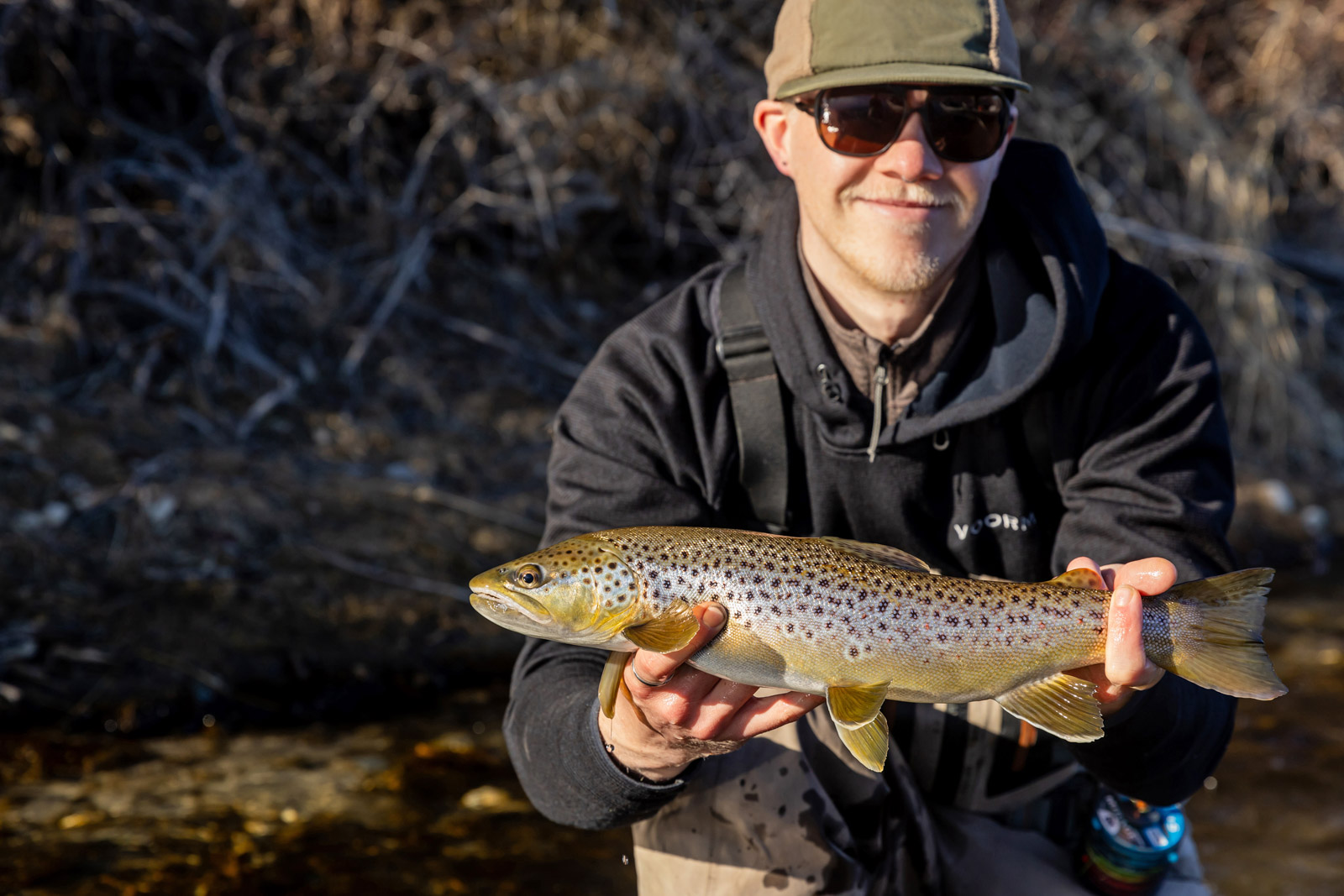
by Luke Boyd
When fall and winter roll around, I have one thing on my mind: trout. The rivers are empty and the fish are hungry. What more does a guy want? As the water temps cool, fish often hold in deeper holes. The midges provide some relief for the fish, but they are easily enticed to capitalize on a bigger source of protein.
The crulpin (portmanteau of “crawdad” and “sculpin”) came to fruition to target those fish holding near the bottom. It sinks like a rock and has a killer jig action, perfect for enticing those lethargic fish. I tie this fly in all sorts of different lengths, weights, and colors—anywhere from one to five inches long, using all the common streamer colors, although the three-inch version in brown seems to be the best producer.
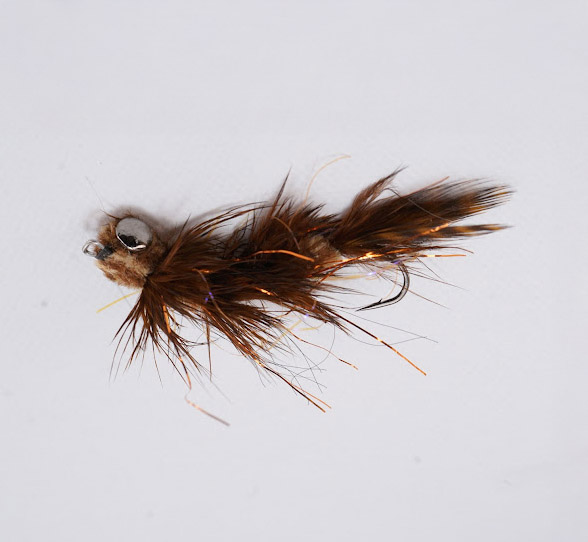
Materials
Hook: Gamakatsu Stinger, size 6
Shank: Fish-Skull Articulated Shank, 20mm
Thread: Veevus 100D
Hackle: Spirit River UV2 Grizzly Soft Hackle, brown
Dubbing: Hareline UV Polar Chenille Rusty Copper | Hareline Stonefly Chenille, tan/brown
Eyes: Hareline Brass Dumbbell Eyes
Instructions
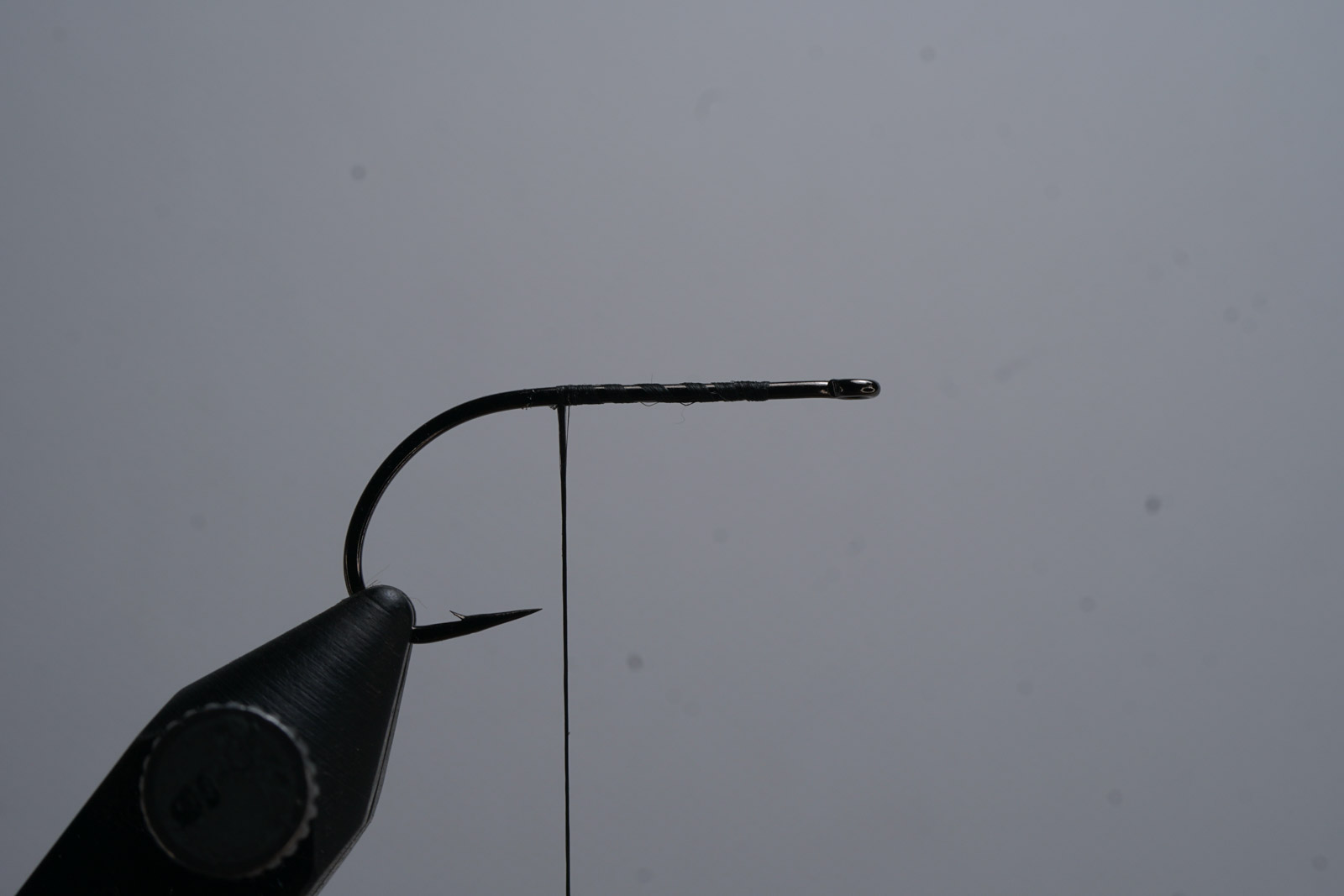
1. Secure the hook in the vise and start by wrapping a layer of thread down to the start of the bend.
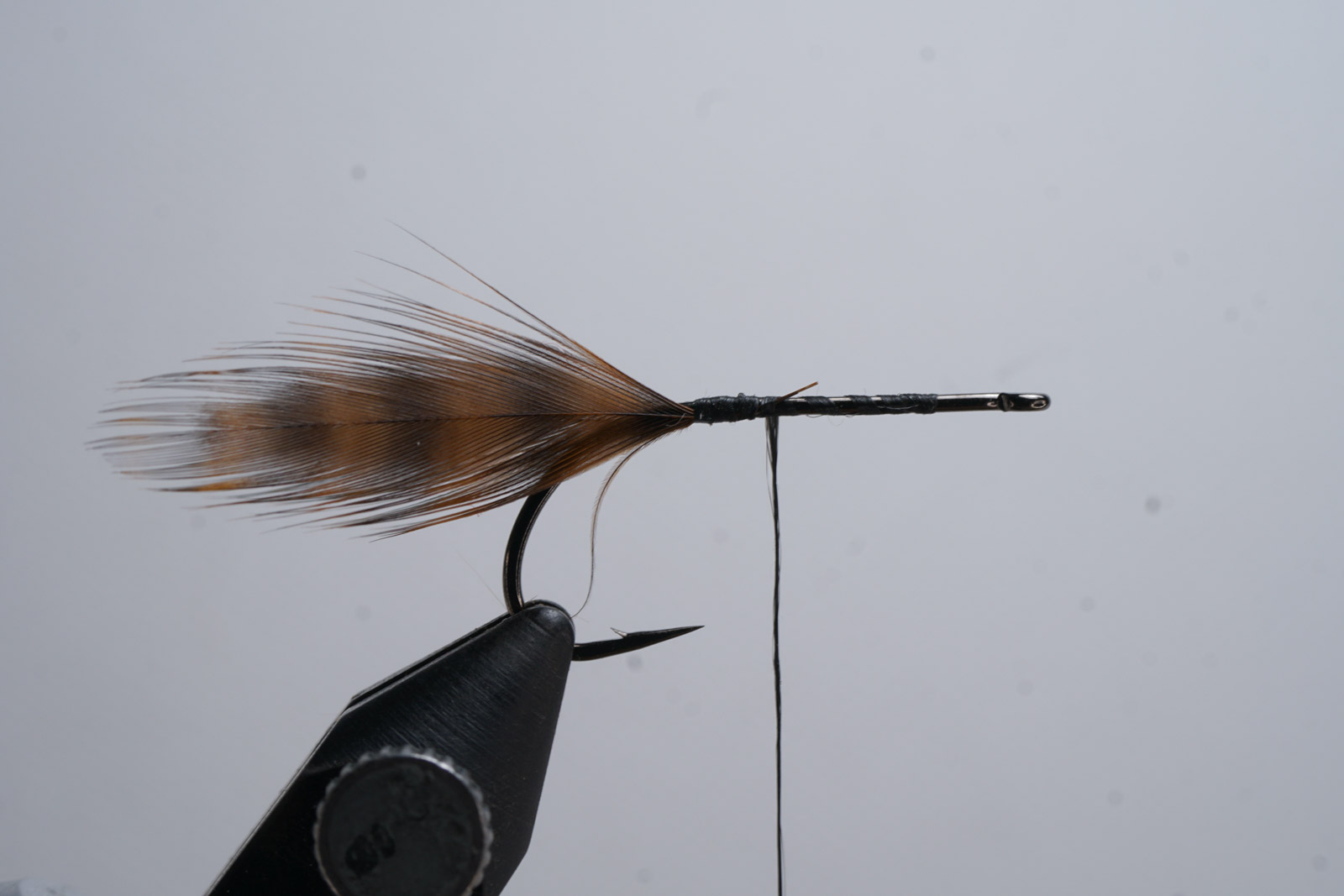
2. Grab two similar-sized pieces of grizzly hackle and strip the fibers so that each hackle tip is roughly the size of the hook shank. Orient the hackle so that they flare outward when secured.
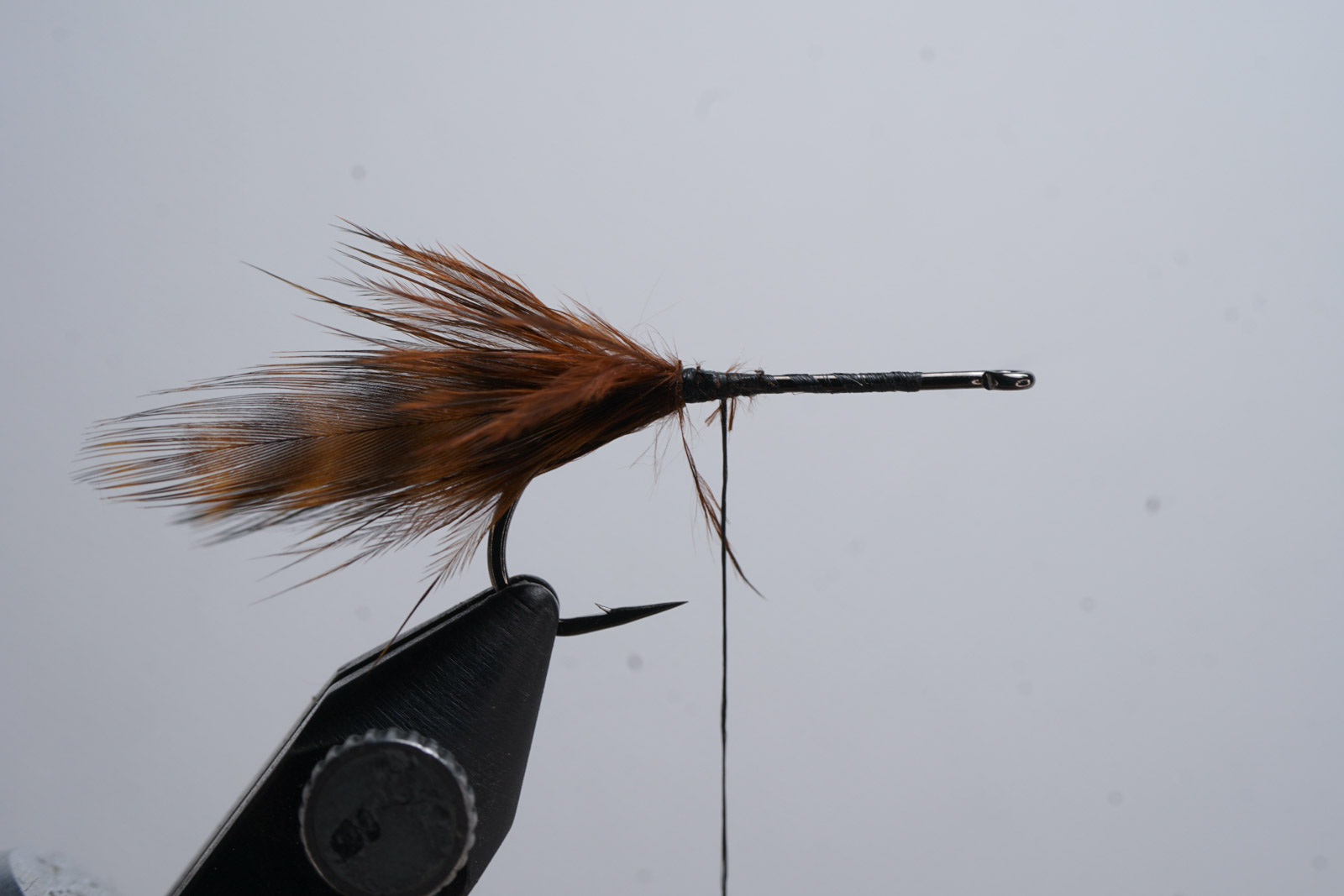
3. Tie in another piece of grizzly hackle, starting around the midsection of the feather. The bottom two-thirds of the feather where it transitions from wispy tips to fluff is what we want. Do one full wrap and secure.
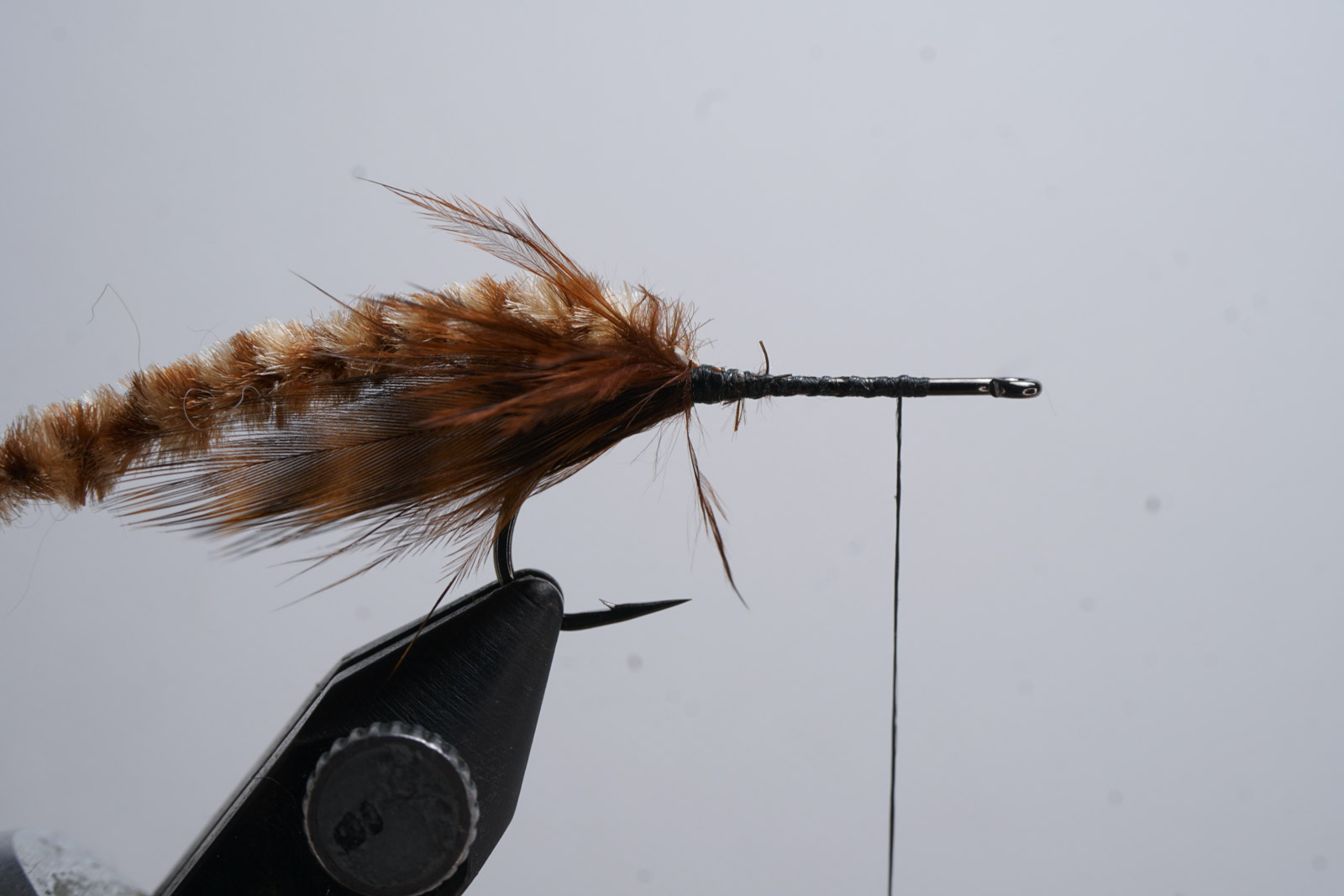
4. Tie in some chenille and wrap it three-quarters of the way up the hook.
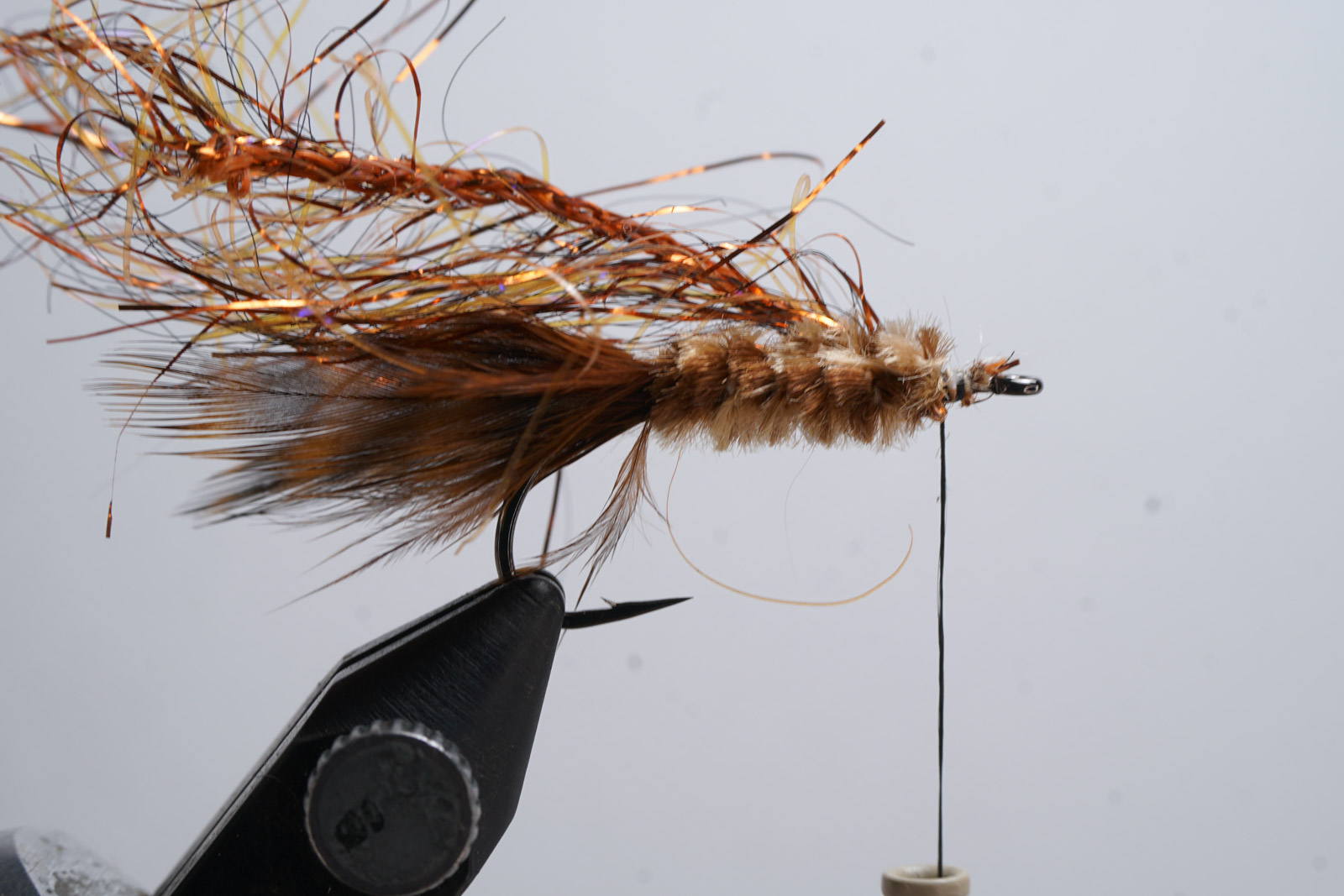
5. Next, tie in a piece of polar chenille. One full wrap and secure.
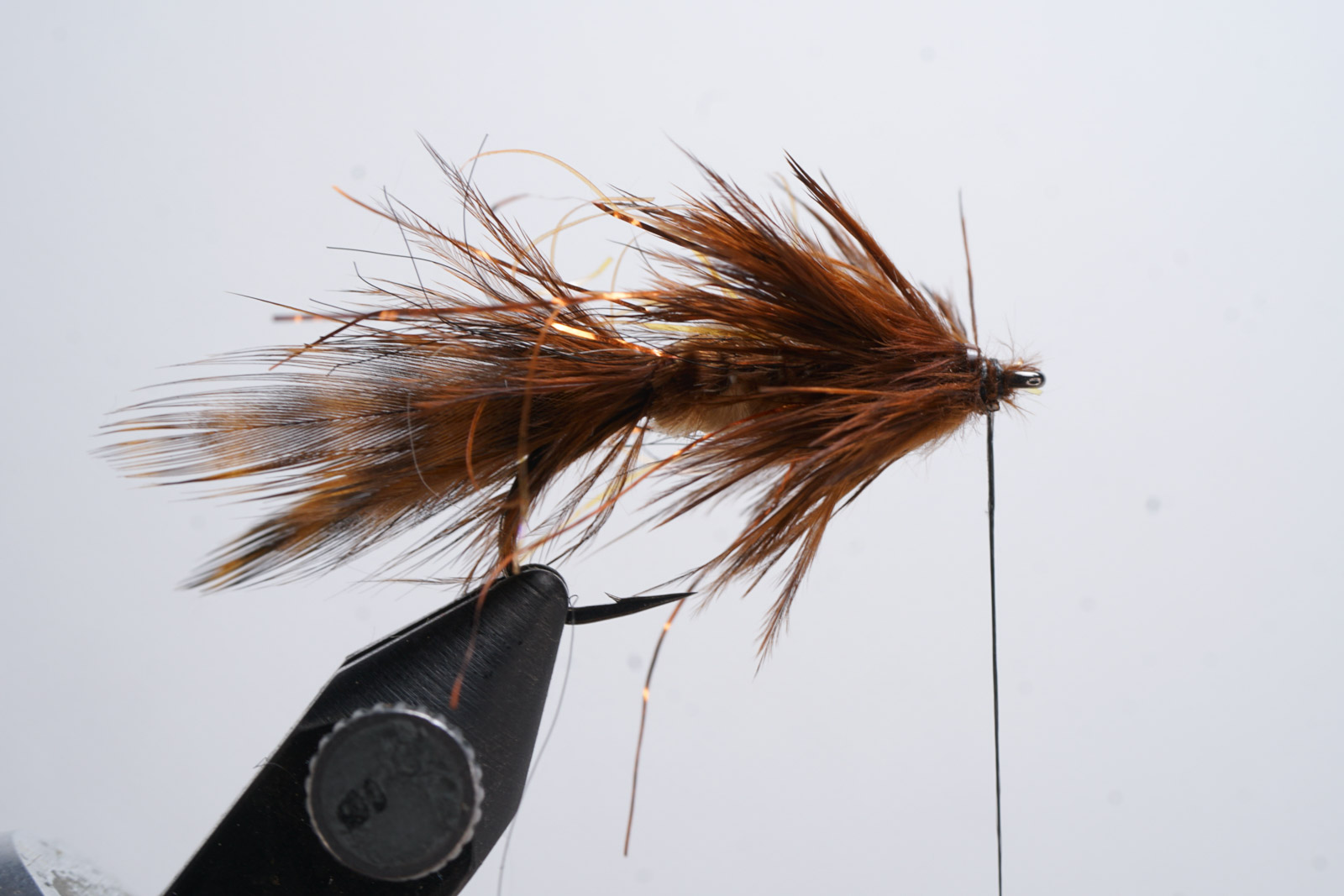
6. To finish the back section, tie in another piece of grizzly hackle using the fluffier lower two-thirds of the feather. Wrap to the eye and secure. Whip-finish and glue.
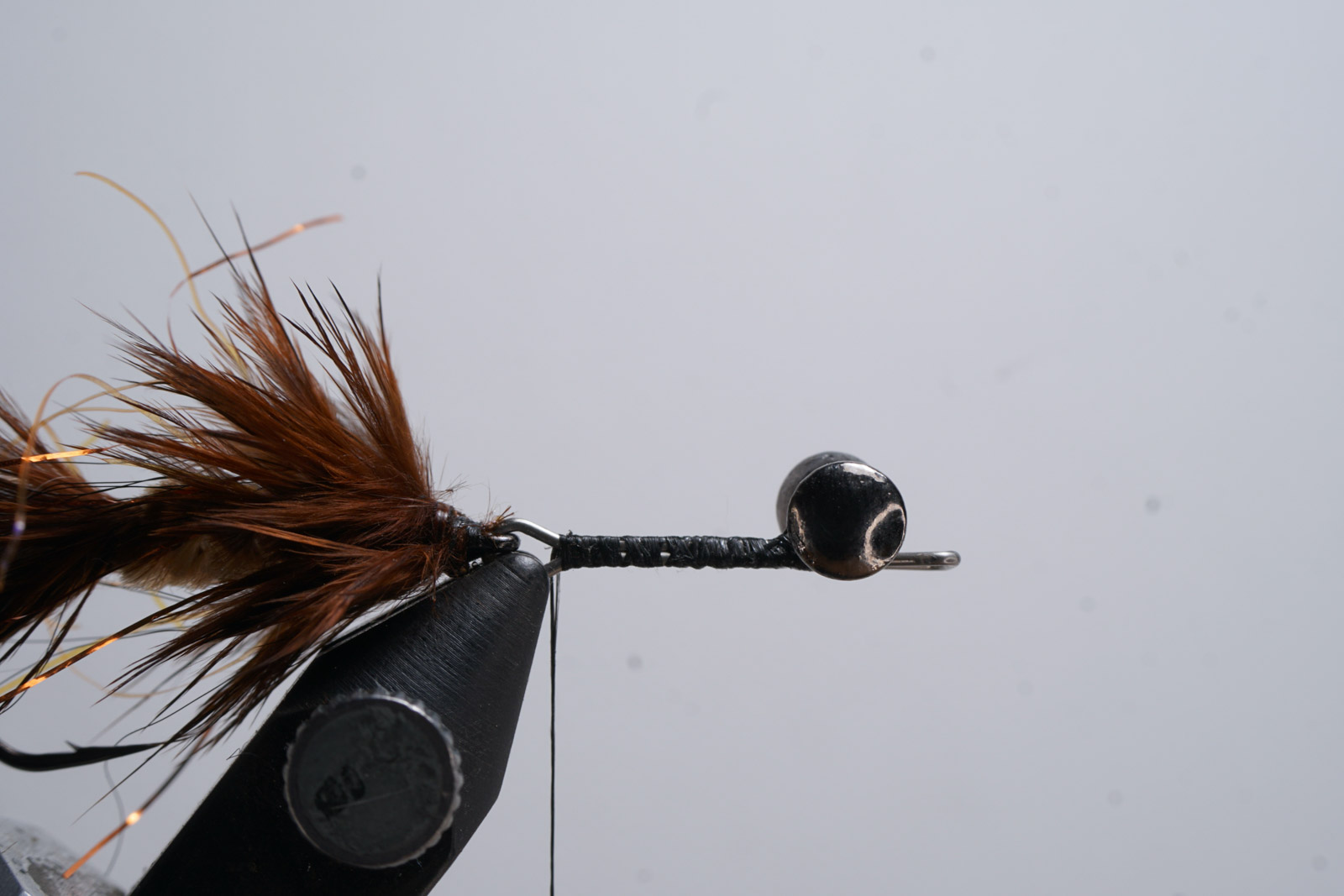
7. After attaching the shank and putting a thread layer down, secure the dumbbell eyes at the front of the shank. The dumbbell eyes should be on top of the shank so that the fly rides hook-point up.
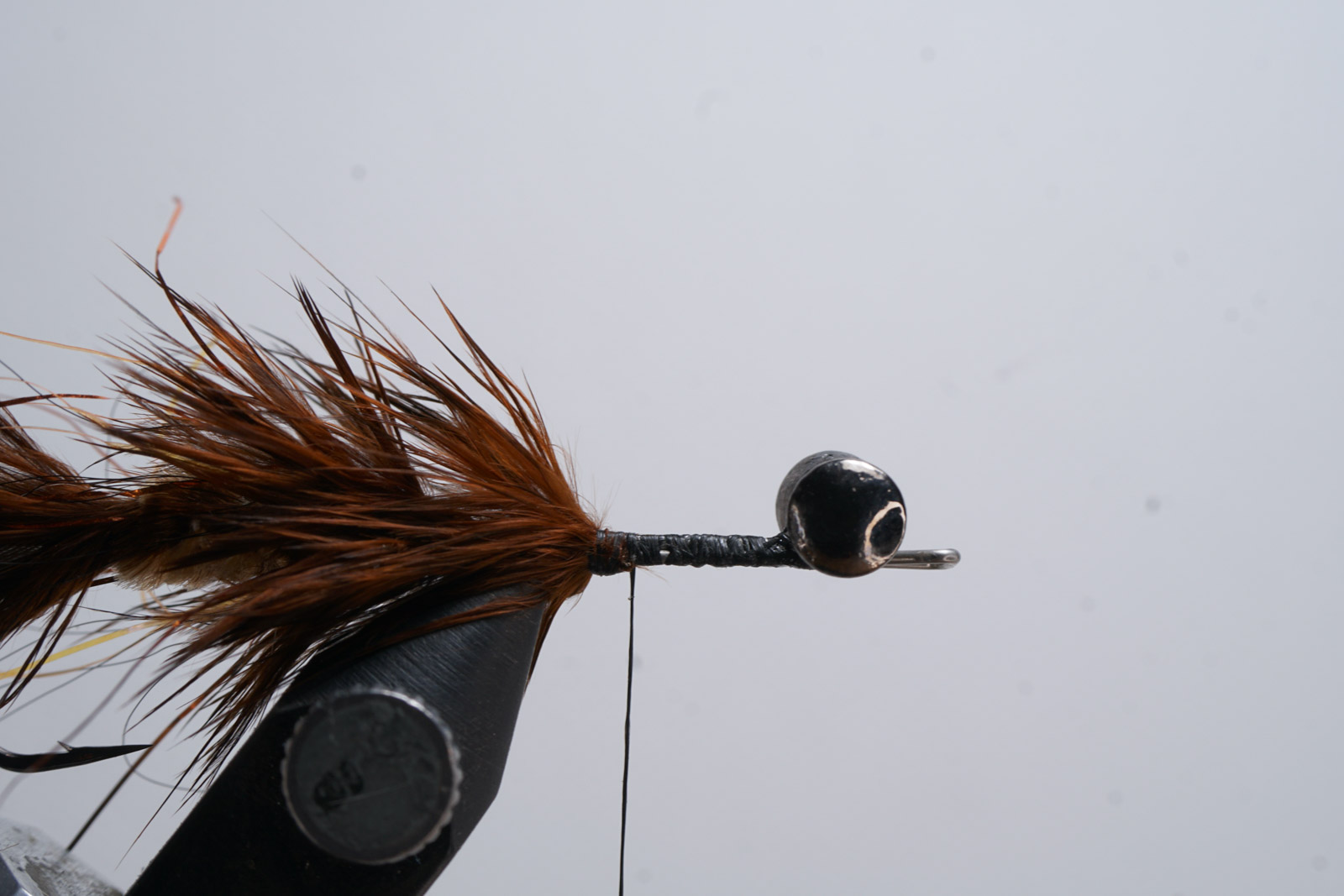
8. Wrap to the backend of the shank where another grizzly hackle feather will be tied in. Once again, use the lower two-thirds portion of the feather. Wrap 2-3 times and secure.
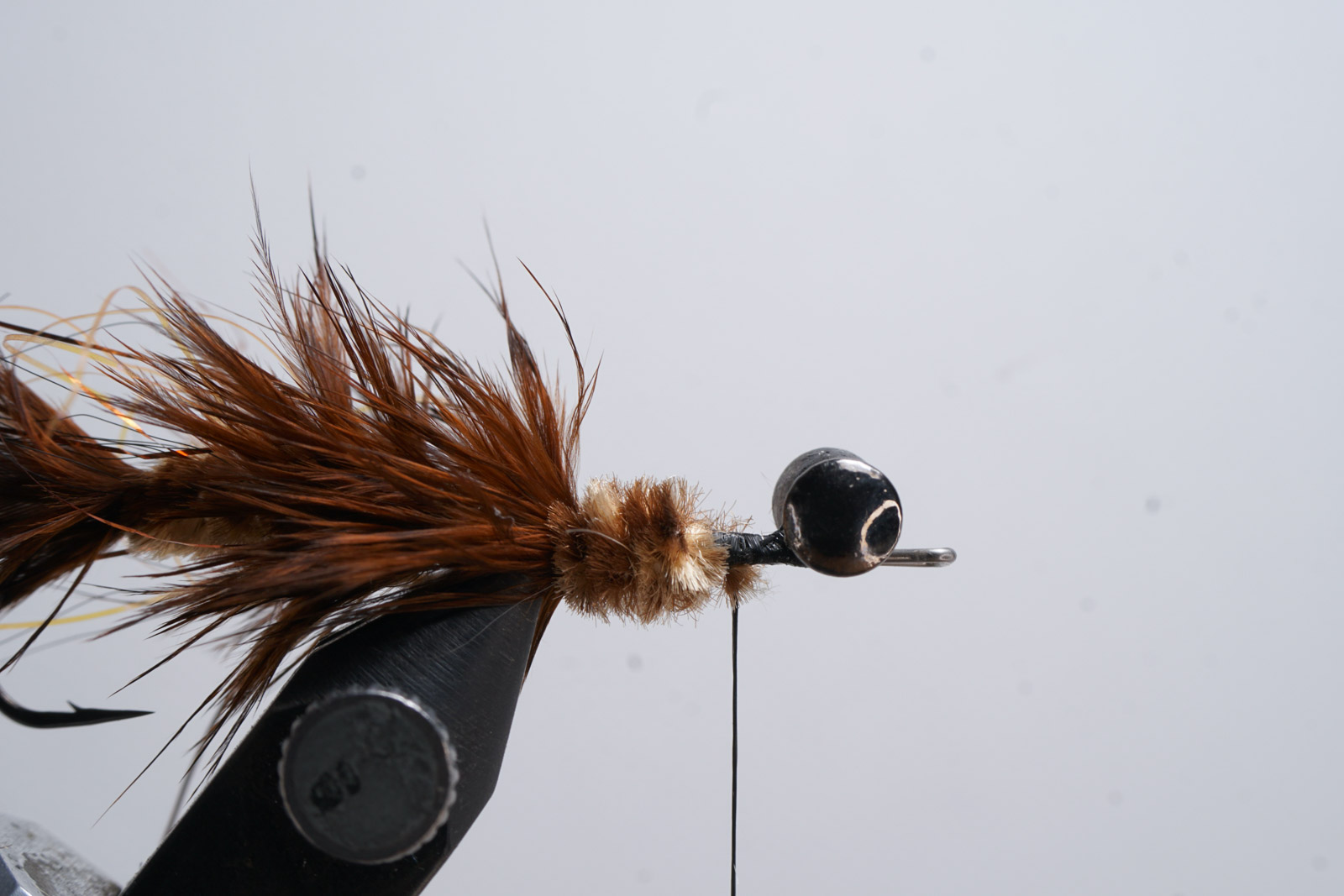
9. Tie in more chenille and wrap halfway up the remaining shank.
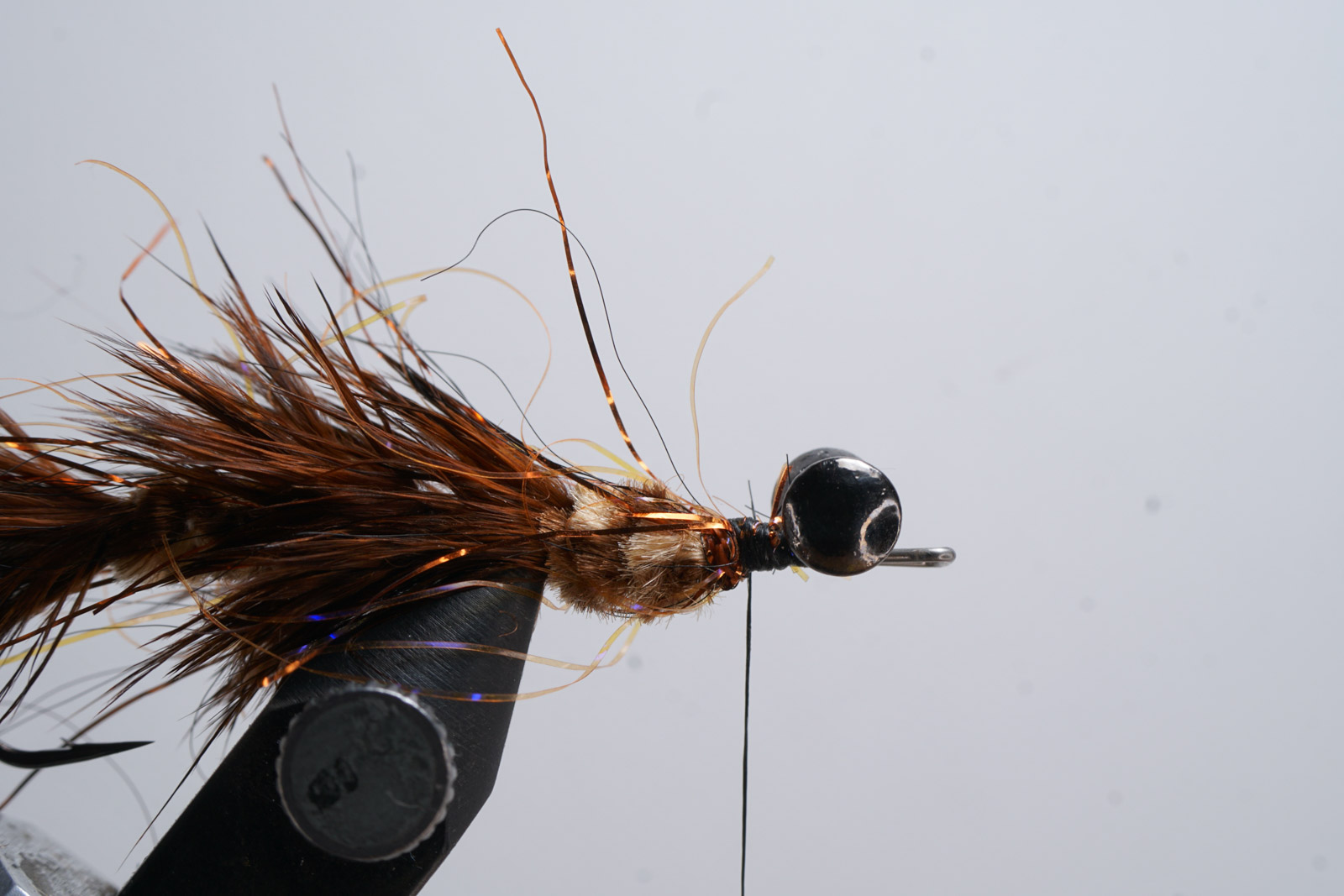
10. Next, attach a piece of polar chenille. Do one full wrap and secure.
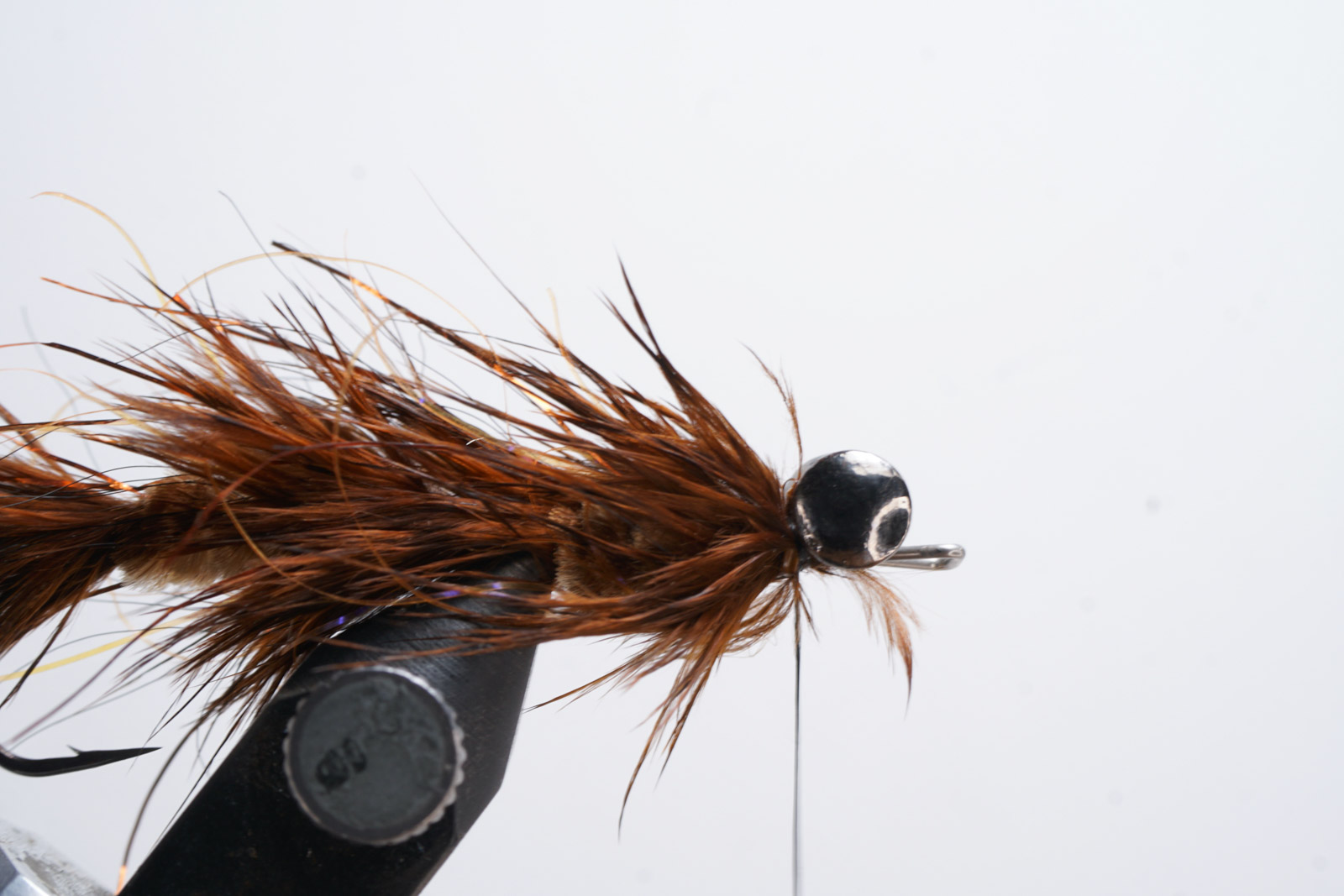
11. Tie in another piece of grizzly hackle, using the lower two-thirds section of the feather. Wrap to just behind the eyes and secure.
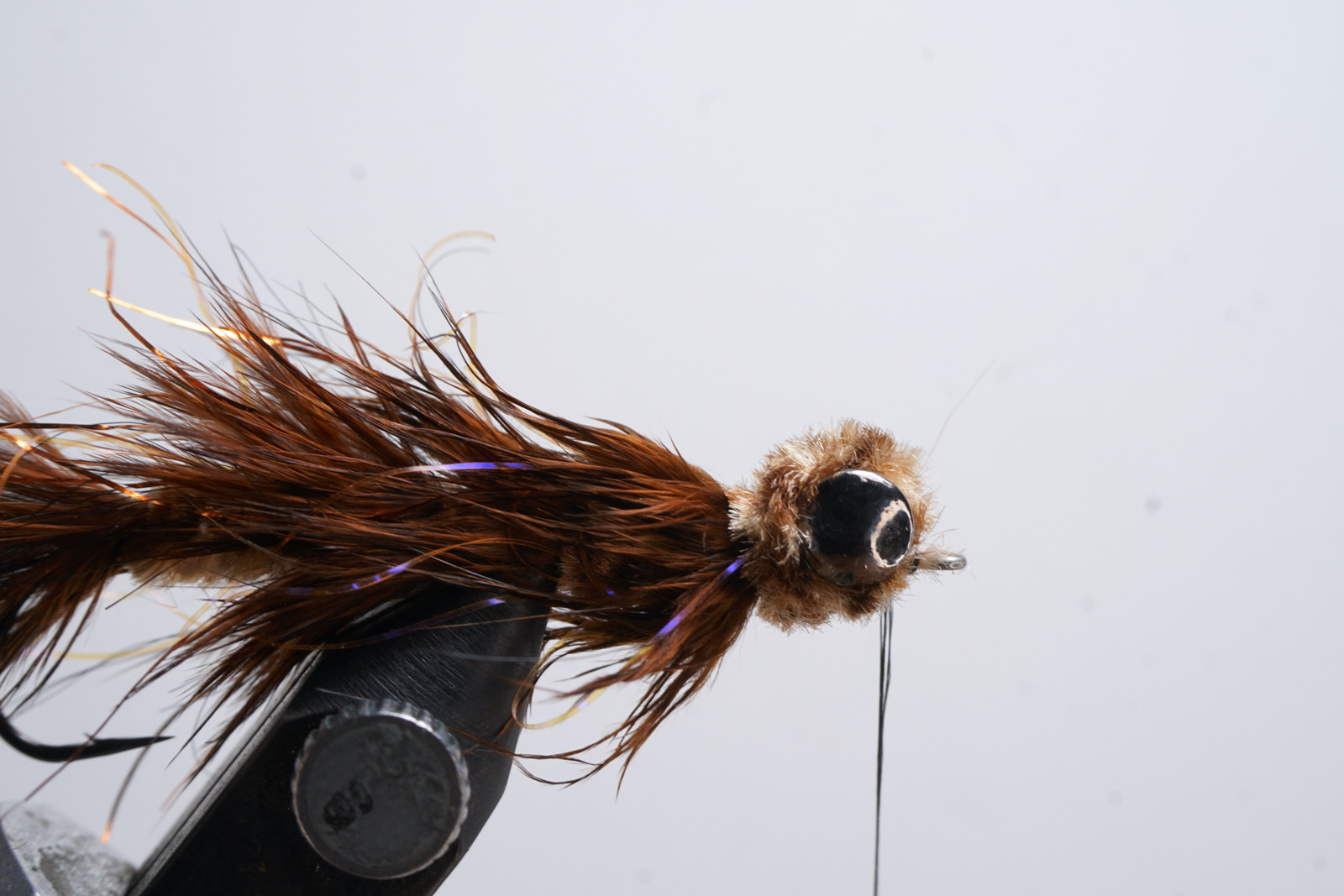
12. Last but not least, tie in a piece of chenille and advance your thread ahead of the eyes. Do one wrap behind the eyes and figure-eight it around the eyes until all the thread is covered. Secure the chenille and whip-finish.
Luke Boyd works at Montana Troutfitters in Bozeman.
